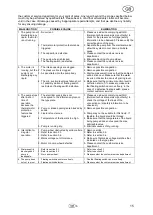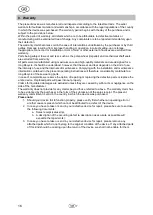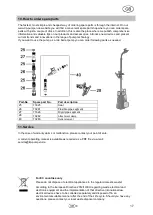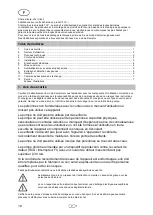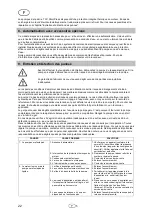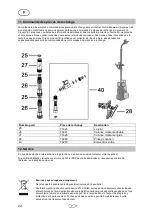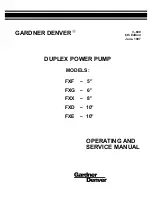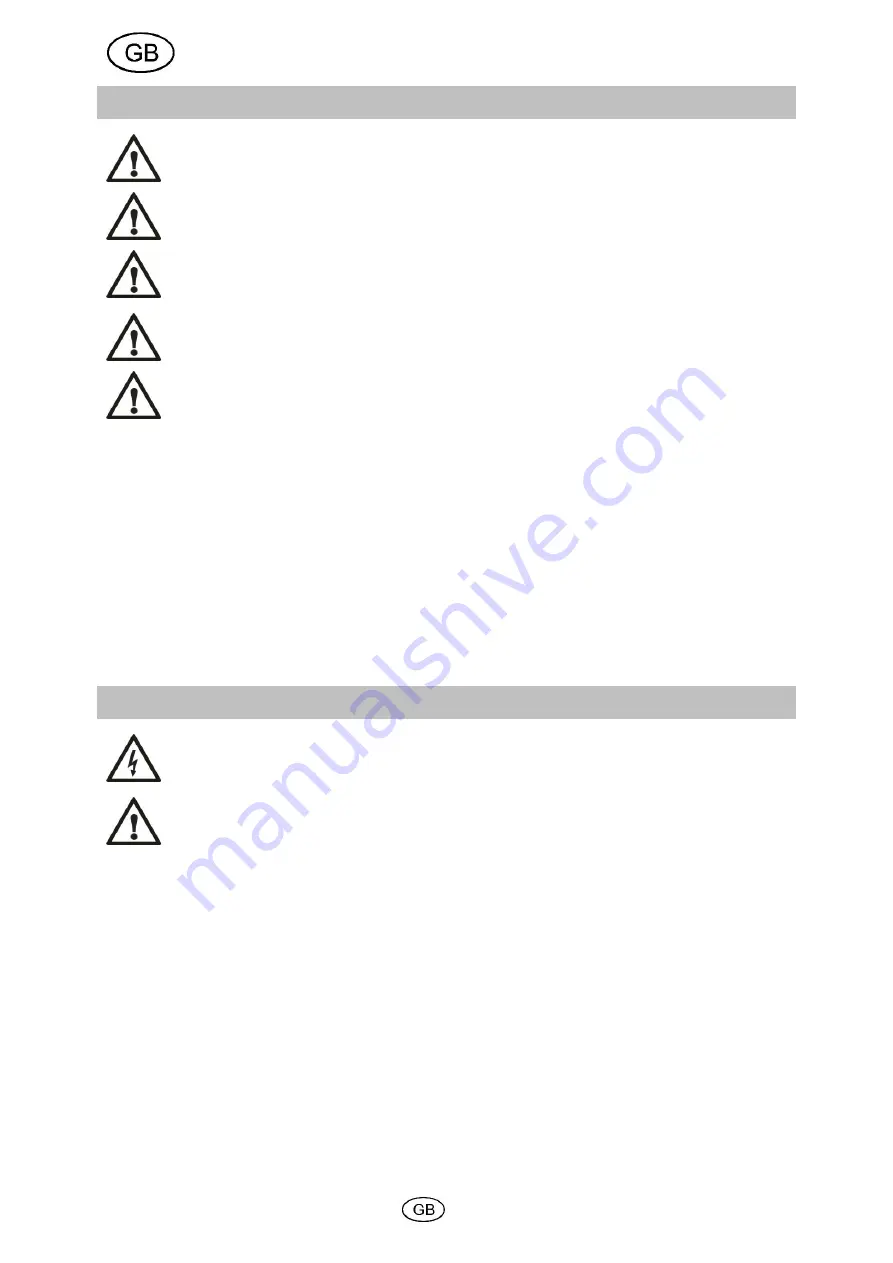
5
7. Putting into operation
Nobody must be in the water while the pump is running.
The pump must only be operated in the performance range indicated on the type
plate.
Dry-running - i.e. operating the pump without discharging water - is to be avoided
since the absence of water may cause the pump to run hot. This may cause
considerable damage on the device.
Please make sure that the electrical plug connections are in the flood-proof area.
As long as the device is connected to the electrical mains, one must never reach with
one’s hands into the opening of the pump.
Please inspect the pump visually prior to each use. This applies in particular to the mains connection
line and the mains plug. Make sure that all screws are firmly tightened, and verify the perfect condition
of all connections. A damaged pump must not be used. In any case of damage, the pump has to be
inspected by qualified service staff.
To put the unit into operation, please plug the mains plugs into a 230V AC socket. If the water level
has reached or exceeded the cut-in level, the pump will start to run immediately.
To stop the operation of the pump, please pull the mains plug off the socket.
The negligible water leakage at the lateral venting bore hole - about 10 cm below the pressure port - is
inherent to the design of the device and provides for both venting at the start-up of the pump and for
temporary pressure relief when the stopcock is closed, respectively.
The electrical pumps of the T.I.P. DrainPress series are equipped with an integrated thermal motor
protection feature. In the case of overload, the motor will switch off independently and on again after
cooling down. For possible causes and their elimination, please refer to the “Maintenance and
troubleshooting” section.
8. Maintenance and troubleshooting
Prior to carrying out any maintenance work, the pump must be separated from the
electrical mains. If you fail to separate the unit from mains, there is a risk of an
inadvertent start of the pump.
We decline any liability for damage caused by inappropriate repair attempts. Any
damage caused by inappropriate repair attempts will avoid all warranty claims.
Observing the conditions of use and the ranges of application of the present device will reduce the risk
of possible operational malfunction and contribute to extend the lifetime of your unit. Sand and other
abrasive matters contained in the liquid discharged will speed up the process of wearing and tearing
and accelerate the drop in performance.
If the unit is operated properly, it will not require any maintenance. Where applicable, you may clean
the hydraulic part from sediments and dirt. This can be done by counter-flushing the unit with clear
water using a hose to be connected through the pressure port of the pump. To remove tenacious dirt,
the foot of the pump (8) can be removed by loosening the screws (9) located at the bottom of the
pump. To avoid any hazard, any further disassembly as well as the replacement of parts must only be
done by the manufacturer or a by an authorised service provider.
Water left in the pump may freeze in case of frost and thus cause considerable damage. Therefore,
the pump must be removed from the liquid being discharged and fully drained when temperatures are
below the freezing point of the liquid. Please store the pump in a dry, frost-protected place.
In the case of malfunction, you should first of all check whether it was caused by an operating error or
some other reason which cannot be attributed to a defect of the device - for instance a power failure.
The list below shows some possible malfunctions of the device, possible causes and tips on their
elimination. All the measures referred to may only be carried out with the pump being separated from
the electrical mains. If you yourself feel unable to eliminate any of these malfunctions, please contact
14
















